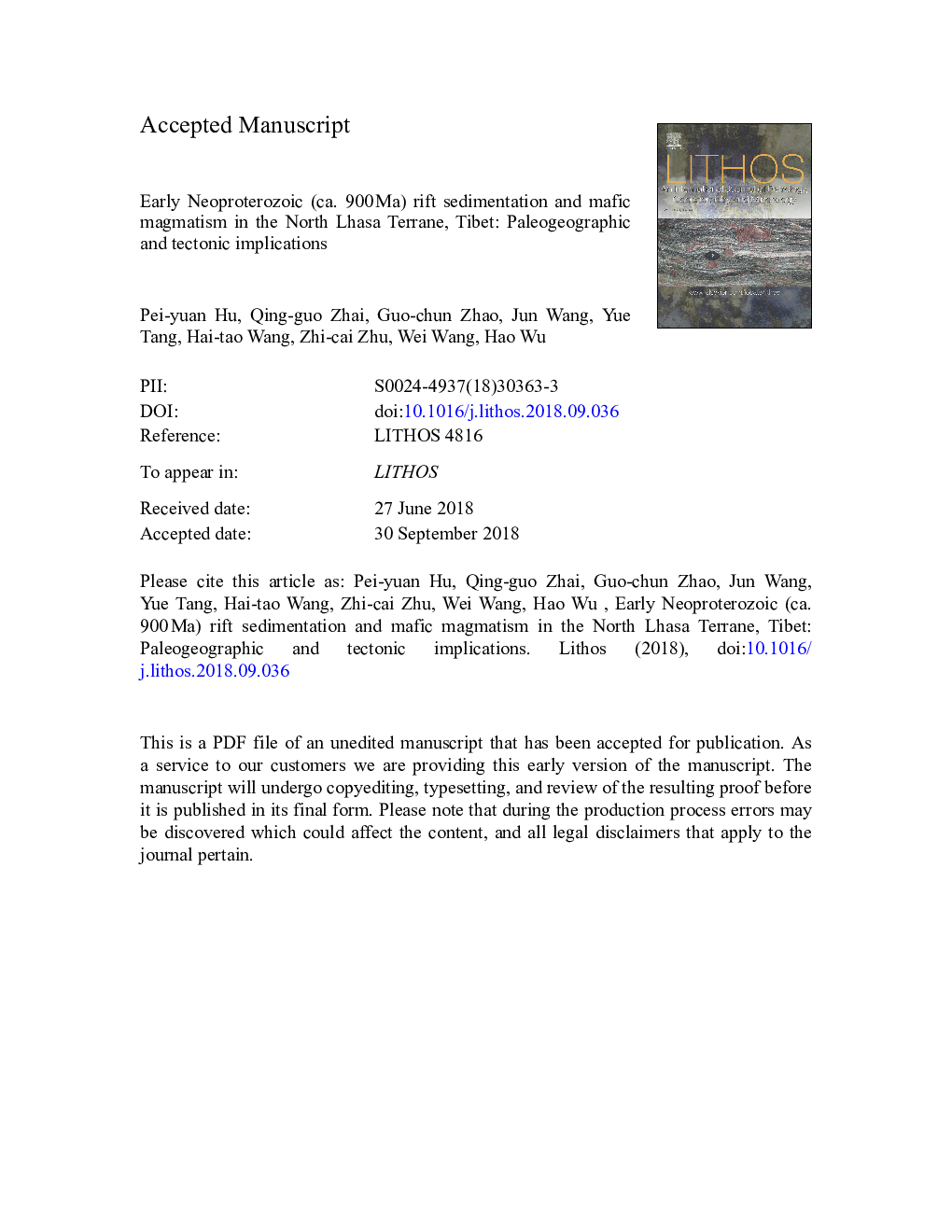| Article ID | Journal | Published Year | Pages | File Type |
|---|---|---|---|---|
| 11024650 | Lithos | 2018 | 50 Pages |
Abstract
The origin and evolution of the Precambrian North Lhasa Terrane in the central Tibetan Plateau remain enigmatic. Here we present UPb age and Hf isotopic data for detrital zircons from early Neoproterozoic quartzites in the North Lhasa Terrane, Tibet. An integrated petrological, geochronological, geochemical, and Sr-Nd-Hf isotopic study was also undertaken on amphibolites associated with the quartzites. The depositional age of the quartzites is constrained to be between ca. 931â¯Ma (youngest detrital igneous zircon core) and 869â¯Ma (oldest metamorphic zircon rim). The detrital zircons have a main age population from 1200 to 1000â¯Ma, and lack zircons with ages of 1000-900â¯Ma. Zircons from the amphibolites yield concordant ages of ca. 913-902â¯Ma, which are comparable to the depositional age of the quartzites. The amphibolites have N-MORB-like compositions and are characterized by high positive zircon εHf(t) (+7.2 to +14.0) and whole-rock εNd(t) (+5.5 to +6.0) values. Their compositions have been modified by crustal contamination. The formation of these quartzites and amphibolites was related to an early Neoproterozoic rift adjacent to the African side of the northern East African Orogen, followed by opening of part of the Mozambique Ocean.
Related Topics
Physical Sciences and Engineering
Earth and Planetary Sciences
Geochemistry and Petrology
Authors
Pei-yuan Hu, Qing-guo Zhai, Guo-chun Zhao, Jun Wang, Yue Tang, Hai-tao Wang, Zhi-cai Zhu, Wei Wang, Hao Wu,
